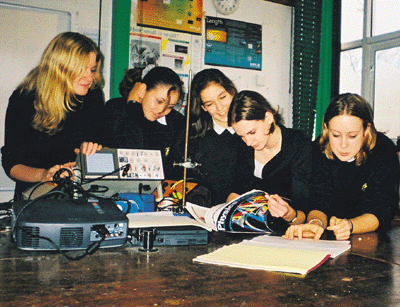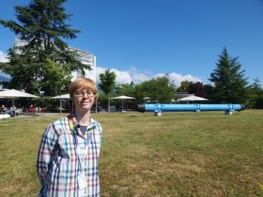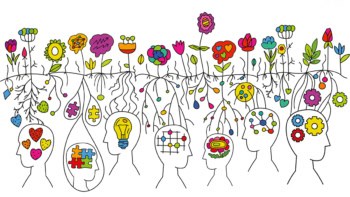Physicists and educationalists have many theories about why so few girls study physics. Valerie Jamieson goes back to school and asks female pupils what they really think.

Vanessa Bennett, Callie Crook and Kelly Bullock do not mind being the only girls studying A-level physics at Gosford Hill School in Oxford, a mixed comprehensive with 1200 pupils. In fact, the 17 and 18 year olds are rather proud of it. “It makes me feel more of an individual.” says Callie. “Most of the other girls in our year are studying English, drama and performing arts.” Vanessa agrees: “It makes me feel intelligent.”
Although all three have decided against studying physics at university, they recognize that doing physics at school can open the door to a wide range of careers. Vanessa has always wanted to be a doctor, Callie hopes to be a forensic pathologist and Kelly plans to be a sound engineer. Moreover, they all have high praise for their physics teacher, Helen Reynolds, who has “a way of describing things that other teachers would not think of”.
So why are there so few girls in their class? “Physics is seen as a thing that boys do,” says Callie. Indeed, boys outnumber girls by four to one at A-level in England and Wales – and by ten to one at Gosford Hill. Vanessa has other ideas: “People perceive physics as having a lot of maths in it, which puts both boys and girls off. In fact, our course does not involve that much maths. Teachers have got to get that across to pupils.”
Competitive edge
Physics teaching at Gosford Hill – like many other schools across the UK – has been transformed in the past two years by a new approach to post-16 education that is designed to attract students, like Kelly, who are not studying maths (see New hope for physics education, Physics World October 1999 pp29-32). Kelly admits that some of the maths taught during the physics lessons is complicated, but finds some of the physical concepts more challenging. That said, she gets a kick out of working things out and from doing experiments.
Physics is Vanessa’s favourite science subject. “I really enjoy the lessons and all the practical work we do,” she enthuses. “We have not done quantum behaviour yet, but I really like that kind of thing because it links to chemistry, maths and computing. And I love the whole idea of cosmology because Stephen Hawking does it.” Indeed, when asked if they could name any living physicists, all the girls at Gosford Hill knew Stephen Hawking from his books, television appearances and his waxwork figure at the London Planetarium.
Open days and conferences run by universities for 16-19 year olds have also given the girls a valuable insight into physics and physicists. After visiting the materials-science department at Oxford University, Callie decided she would consider “something in materials” if she fails to get the grades needed to study medicine. During the same visit, Kelly discovered that “physicists are just regular people doing really interesting things and they don’t wear lab coats”.
So do the girls think that they are better at physics than boys, as the exam results in England, Wales and Northern Ireland showed last year? “We’re a lot more competitive with the boys in all our classes,” says Callie. “There are so many of them that we feel we have something to prove.”
Formative years
Below the age of 16, all schoolchildren in England and Wales take a general course in science, rather than specialist lessons in physics, chemistry and biology. Clearly this is the age when many girls are turned off physics. Nicola Sampson, 15, explains that physics is hard compared with biology and chemistry. She finds radioactivity and atomic physics particularly difficult to grasp because “there is nothing to look at”.
Science also has a bad image according to the girls. One reason may be the lack of female role models. “A lot of scientists in the public eye are men,” says Amy Baskerville. “Scientific discoveries made by women are not reported in the media.” The girls believe that if they knew some women physicists, then they might be more inclined to study physics. They also find that the boys in their class are all too eager to point out that all the famous scientists are men – even though the girls usually outsmart the boys in lessons.
Moreover, the impression that some of the girls have of male physicists is bad. “Physicists are people who sit around with too much time on their hands,” says Stephanie Wiggins. “That’s why it breeds so many weird people.” But Jennifer Carlaw believes that the media is at fault for stereotyping physicists as men who wear white coats in the lab. “Not to mention having glasses and bad hair,” adds Stephanie.
Teacher Helen Reynolds says that Gosford Hill is considering separate science lessons for girls and boys. Stephanie thinks it might be a good idea. “When we do experiments, the boys just mess about,” she complains, “they take all the good equipment and muck up everything.”
At the end of the day, having a good teacher makes the world of difference. “Physics does not have to be boring,” says Emily Field, “it depends how it is taught. If teachers make it more exciting, then it is better. If they just read the lessons from a textbook then you are not going to like it.”



